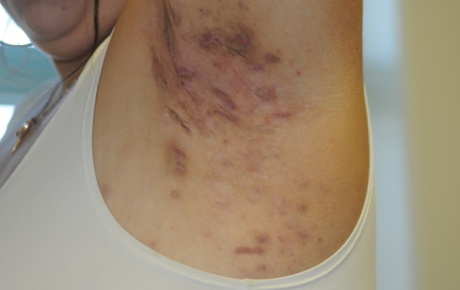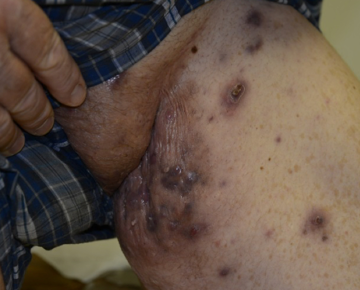HS lesions typically occur in areas of the body where skin rubs together—most commonly the axillary, groin, perianal, perineal, and inframammary areas. As the disease progresses, symptoms can become debilitating, as extensive sinus tract formation and scarring occur.3-5
REFERENCES
1. Jemec GBE. Hidradenitis suppurativa. N Engl J Med. 2012;366(2):158-164. 2. Kurzen H, Kurokawa I, Jemec GBE, et al. What causes hidradenitis suppurativa? Exp Dermatol. 2008;17(5):455-472. 3. Micheletti RG. Natural history, presentation, and diagnosis of hidradenitis suppurativa. Semin Cutan Med Surg. 2014;33(suppl 3):S51-S53. 4. Kerdel FA, Menter A, Micheletti RG. Introduction. Semin Cutan Med Surg. 2014;33(suppl 3):S47. 5. Alikhan A, Lynch PJ, Eisen DB. Hidradenitis suppurativa: a comprehensive review. J Am Acad Dermatol. 2009;60(4):539-561. 6. Lockwood SJ, Prens LM, Porter ML, Kimball AB. Treatment of hidradenitis suppurativa. In: Kimball AB, Jemec GBE, eds. Hidradenitis Suppurativa: A Disease Primer. Switzerland: Springer International Publishing AG; 2017:39-51.


